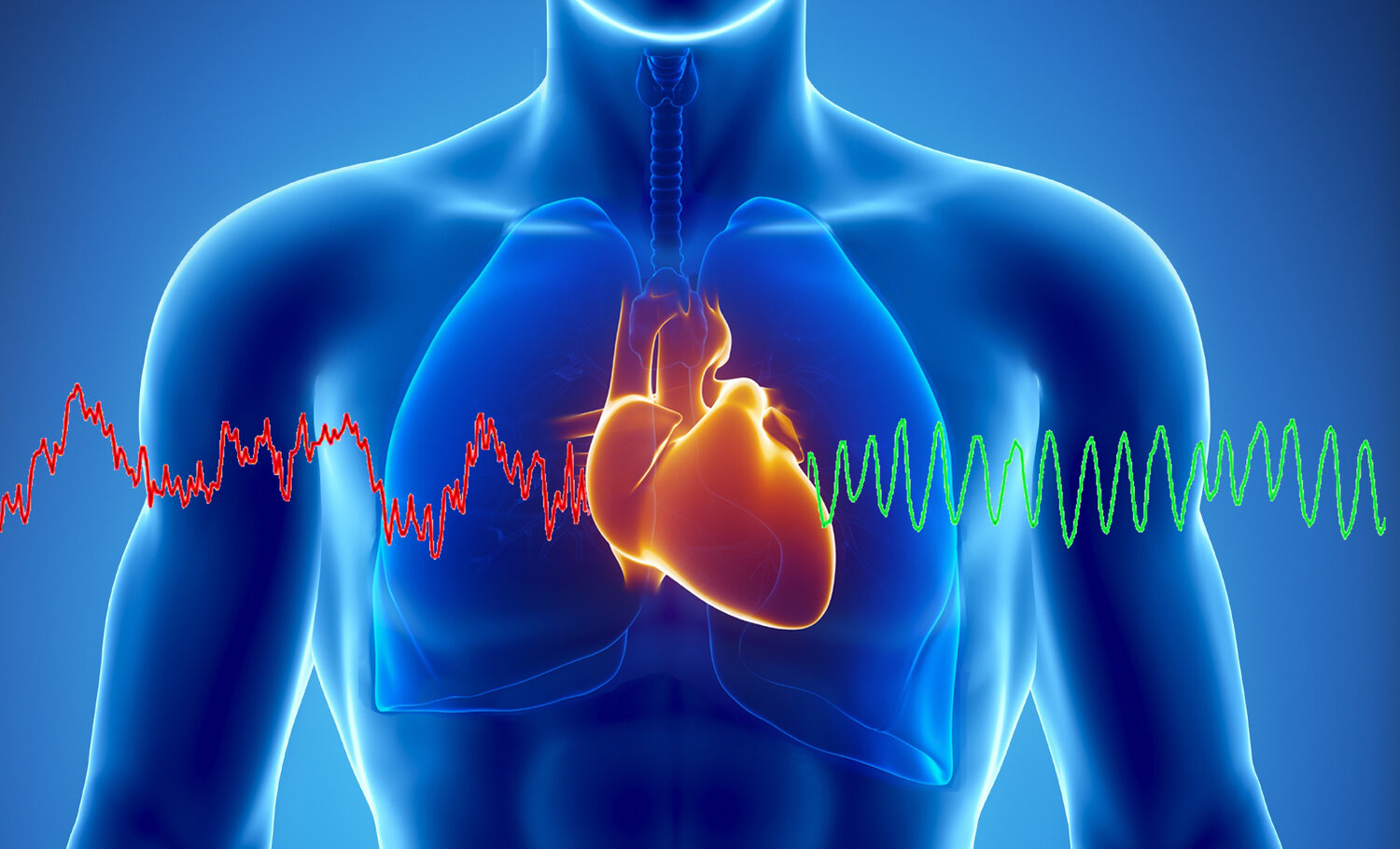
The ability to alter our emotional response in varying situations is key to overall well-being and personal effectiveness. While the heart has been viewed as a symbol of inner knowing for centuries, we now understand that the heart sends more messages to the brain than the brain sends to the heart. We can train to improve our response when emotions, stressful thoughts, and feelings arise by practicing heart coherence.
Research has shown that the pattern of your heart rate reflects the state of emotions and the responsiveness of your nervous system. When we feel stressed, angry, impatient, irritable, or frustrated, the heart shifts into a disorganized, jumbled pattern. When we are calm and feeling positive emotions, the heart signals the brain, which synchronizes to the heart rhythm.
Heart coherence training is a simple practice of slowing down, taking time to get quiet, find stillness in your body, and paying attention to the breath.
In our practice, we use the Heart Math system to provide real-time feedback to clients who want to know if they are coherent. A sensor, worn on the ear or finger, senses heart rate and changes in pulse, and reports moment-by-moment readings to show how things are changing as the client slows down and begins to relax. The goal is to learn to release stress, find an inner “balance”, and to build inner strength to achieve calm no matter the circumstance.
“Coherence is the state when the heart, mind and emotions are in energetic alignment and cooperation,” says HeartMath Institute Research Director Dr. Rollin McCraty. “It is a state that builds resiliency – personal energy is accumulated, not wasted – leaving more energy to manifest intentions and harmonious outcomes.” Heart Math tech recently reported the results of coherence training in 11,900 individuals using their Inner Balance app. Learning to regulate breathing rate, calm thinking, and improving focus on the positive while using the Inner Balance device has shown improvements in:
- ability to focus
- better sleep
- less anxiety
- less fatigue
- less depression
If you want to improve self-regulation of emotions and brain state, click HERE to check out HeartMath and the InnerBalance app.
To learn more about how we integrate heart coherence training with neurofeedback to support our clients, click HERE.




